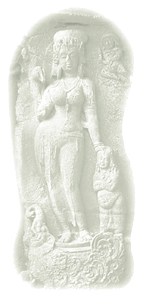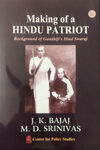AYODHYA AND THE FUTURE INDIA
Following the events at Ayodhya in December 1992, the Centre organised a series of meetings from January 1993 onwards to discuss the impact of these events on the future Indian polity. Leaders of all sections of opinion were invited to present their view in these meetings. The list of speakers included:
WINTER SCHOOL ON INDIAN ECONOMY AND POLITY
The Centre held a 7 day Winter School on Indian Economy and Polity in November 1994. The School was attended by about 20 college students and teachers drawn from all over the country.
SADAS AT SRI TIRUMALA
In October 1996, at our request many of our highest Acharyas, including Sri Kanchi Kamakoti Peethacharya Jagadguru Sri Sankara Vijayendra Saraswati Swamiji, Sri Tridandi Srimannarayana Ramanuja Chinna Jeeyar Swamiji of Seethanagaram, Sri Tiruppanandal Adheenam Sri-la-Sri Kasivasi Muttukumara Swamiji, Srimat Paramahamsa Kaliyan Vanamamalai Ramanuja Jeeyar Swamiji of Nanguneri, Sri Yadugiri Yatiraja Sampatkumara Ramanuja Jeeyar Swamiji of Melukote, Sri Jagadguru Ramanujacharya Vasudevacharya of Ayodhya, Srimat Paramhamsa Chinna Jeeyar Swamiji of Tirupati, Srimat Paramahamsa Periya Jeeyar Swamiji of Tirupati and Jathedar of Sri Akal Takhat Sahib Sri Manjit Singh Khalsa met at the Asthanamandapam in Sri Tirumala Kshetra to pronounce upon the Indian discipline of sharing and abundance and its continuing relevance today.
NATIONAL SEMINAR ON ANNAM BAHU KURVITA
The Centre, in collaboration with the Observer Research Foundation of Delhi, organized a seminar at the Parliament House Annex on August 13, 1997 to deliberate upon the work of the Centre regarding the Indian discipline of growing and sharing food in abundance and on the current state of hunger and scarcity prevailing in the country.
EXHIBITION ON “TIMELESS INDIA, RESURGENT INDIA:
A CELEBRATION OF THE LAND AND PEOPLE OF INDIA”
The exhibition is an effort to present the essential features of Indian geography, culture, history and economy. Comprising of about 90 large-format panels, the exhibition is divided in several sections. The first and the largest section offers an overview of the extraordinary natural resources that India commands in the form of land, soil, water, sunshine, vegetation, animals and minerals.



